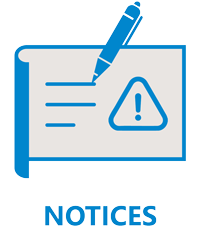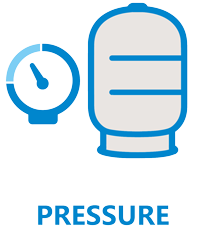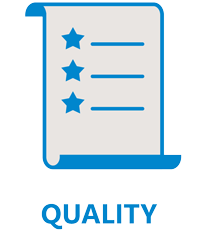
Yes, AQUASKY pressure tanks are complied with the European PED
Directive 2014/68 / EU (Pressure Equipment Directive) and according
to EN 13831.

| Pressure Tanks | Bar | PSI |
|---|---|---|
| RO-PLUS | 7.0 | 100 |
| PUMPLUS | 10 / 16 / 25 | 150/ 230 / 360 |
| Therm-Plus | 10 | 150 |
| Hydro-Plus | 10 | 150 |
| Pressure Tanks | °C | °F |
|---|---|---|
| RO-PLUS | 90 | 194 |
| PUMPLUS | 90 | 194 |
| Therm-Plus | 90 | 194 |
| Hydro-Plus | 120 | 250 |
AQUASKY warranty differs in market. Please contact your local distributor for warranty applicable in your area.

Yes, it is possible to modify the pre-charge pressure of AQUASKY pressure tanks with cautions. We suggest asking to an expert to carry out the operation. Being aware of the specific features of the system or plant where the vessel has to be or is installed, the pre-charge pressure of an empty AQUASKY vessel can be increased up to a maximum of 3.5 bar and can be reduced to a minimum of 0.5 bar.
Depending on the type of use (for boilers, heating systems, domestic hot water systems, hot and cold water systems) it is possible to size the pressure tank by consulting the AQUASKY CALCULATOR FOR DIMENSIONING OF AQUASKY PRODUCTS. For more information, contact our technical department.

The pressure switch is the coordinator between the tanks and the pump. The pressure switch monitors the pressure inside the tank. Accordingly, turns on or shuts down the pump when cut-in and cut-out pressures have reached inside the tank, separately.
In general, pump starts and stops according to the pre-established pressure settings. Our pressure tank's drawdown feature with a 30/50 pressure setting. This means that the pump starts (cut-in) when the tank psi is 30 and will stop (cut-out) at 50psi. There is often a 20psi difference between the cut-in and out, starting at 20psi.
The pre-charge of a tank depends on many factors. First of all, what type of tank (generally speaking, purely heating or potable water usage) and how big the tank is. All AQUASKY tanks are pre-charged and tested in the factory. The pre-charge should be 2psi less than the pump cut-in pressure.

As regard to the installation, service and maintenance of pressure tanks manufactured by AQUASKY, please refer to the instruction manuals.

A diaphragm tank allows the system N2 cushion to be separated from the system water. This prevents water from leaking since the N2 is between the tank wall and the outside of the diaphragm and the system water is on the other side. The AQUASKY pressure tank shell has an epoxy powder coated food grade material, furthermore, this family of tanks is NSF 61 approved.
Nitrogen is less likely to migrate through diaphragm rubber than is oxygen, which means the pressure tank does not need to re-fill the air pressure once on the pressure tank in service. Nitrogen is a very stable gas against with temperature changes which means more consistent inflation pressures during the service life.

All AQUASKY pressure tanks with diaphragm are pre-charged with
N2 through an air valve. The rubber diaphragm inside the tank keeps
the water separated from the N2. Therefore, in case of malfunction
and to check if the diaphragm of the tank is broken, you must act on
the internal mechanism of the air valve, pressing it with a tool such as
a screwdriver, and checking what comes out. If water leaks, it means
the membrane is broken and the water has completely filled the
vessel. Whereas, if air comes out, the membrane should still be intact
and it is necessary to simply pre-charge the pressure tank again to
make it work.
In order to avoid breakages and malfunctions, consult the technical label which stuck to the pressure tank and the instruction manual supplied by the manufacturer first. Moreover, it is necessary to:
● Install correctly and periodic maintenance
● Periodically check the pre-charge pressure of the pressure tank and if necessary restore it to the value indicated on the label
● Check the correct grounding of the system, so as to avoid galvanic currents
● Check the correct volume of the pressure tank
● Pay attention to excessive overpressure and water hammering phenomena in the system
● Avoid to install the pressure tank in unsuitable environments or areas subjected to particularly aggressive climatic conditions
● Avoid the formation of condensation that leads to the development of corrosive phenomena
● Monitor the pH value of solutions containing glycols or other substances
● Avoid mixing different antifreeze products